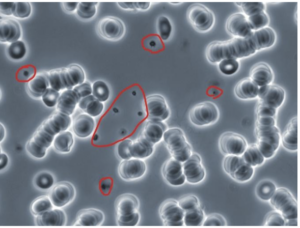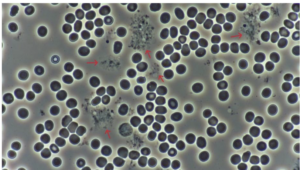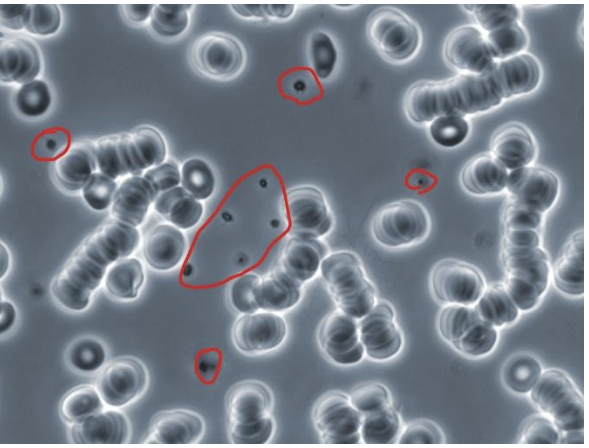Platelets (Figure 1; also known as thrombocytes) are an important part of the mechanism of coagulation that controls bleeding.

Non-activated platelets circulate freely but once activated, they become sticky assuming a star-like shape and enmesh with each other and fibrin, forming a blood clot.
One large group of platelet s in a single sample or several smaller groups of platelets is significant and indicates platelet aggregation (Figure 2). Platelets in normal samples do not group together and lie alone in the plasma. The size of aggregations is measured by comparing it with red blood cells.

A significant degree of platelet aggregation indicates increased cardiovascular disease risk.
Excessive platelet aggregation can lead to various circulatory disorders, including thrombosis and blood vessel blockage.
Heart disease and strokes contribute to a large degree of mortality in the western world. Thrombocyte aggregation is known to be a major factor in these conditions and is therefore a potentially serious finding.
Excessive thrombocyte aggregation can lead to various circulatory disorders, including thrombosis and blood vessel blockage resulting in tissue hypoxia or necrosis.
Thrombocytes are known to be more likely to aggregate in cigarette smokers. Research has also shown that thrombocyte aggregation is increased in diabetes and dyslipidemia.
There are some conflicting studies regarding thrombocyte aggregation and oral contraceptives, but it is likely that this may be a contributing factor to thrombocyte aggregation.
To learn more about live blood assessment, watch Certified Live Blood Microscopist Liz Kerby discuss the process and many of the abnormalities commonly found in the blood at Live Blood Overview by Liz Kerby.
To schedule a live blood assessment, call the Renaissance front desk at 702-258-7860.

